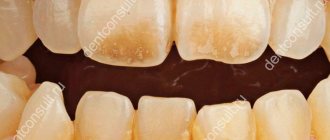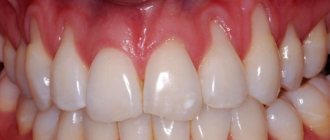Dental implants are one of the most widely used methods to replace missing teeth. To do this, you will visit your dentist, and after an examination, your dentist may inform you that a bone graft is required before the implant can be placed. And this is often scary for patients, especially when they are not familiar with bone grafts for dental implants. But don't worry because the dental bone grafting procedure is simple and painless. If you are reading this, you are probably a candidate for bone graft surgery and want to learn more about it. You have come to the right place because this article will explain everything you need to know about bone grafting, including the technique, different types of grafts, surgery cost, success rate, risks and side effects.
What is a Dental Bone Graft?
Part of the jawbone may degenerate over time due to the loss of one or more adult teeth. In this case, you may need a bone graft before getting a dental implant to increase the amount of bone in the affected jaw area. Overall, dental bone graft surgery is a painless and simple procedure in which bone taken from any part of the body is fused to the existing jaw bone. These bone grafts are taken from the patient's bones, such as the hip, thigh, or back of the jaw. It may also be artificial. You may ask, “Are dental bone grafts necessary?”
In answer to this question, we must state that this surgery is necessary if the patient does not have enough bone in the jaw to support the implant. Factors such as gum disease, facial injury or trauma, and developmental problems can also damage part of the jawbone, in which case bone grafting is necessary.
Also visit our bone graft products: Monib Bone Graft
Efficiency of the procedure
The average period of engraftment of bone blocks is three to six months, sometimes more. It all depends on the individual characteristics of the patient’s body, as well as on the skill of the doctor. If the doctor did everything correctly, the grafted bone soon becomes one with the patient’s own bone. The implant can be securely fixed in it.
However, if the grafting of the bone block was performed poorly and the blood supply to the structure is not normalized, a serious inflammatory reaction may begin. In this case, the graft will have to be removed and the affected area sanitized. Rejection of bone blocks by the body can also occur in the event of biological incompatibility of the implanted materials.
The safety and effectiveness of the operation also depends on the patient’s compliance with the doctor’s recommendations, otherwise complications may develop. Thus, with careless oral care or the traumatic effects of solid food, the protective membrane can be exposed. This will provoke the occurrence of purulent infectious processes that are difficult to treat.
How does Dental Bone Graft Work?
There are several methods for performing bone graft surgery. However, the general process involves the dentist making a small incision in the jaw and inserting a bone graft into the jaw. So how do these bone grafts or powders work? Bone matrix is found in the skeletal system. It is a hard material that helps strengthen bones. The matrix is formed and maintained by the living bone cells within it. Doctors connect bone grafts containing matrix and living cells to the jaw. The cells inside the new bone can then attach to the old bone. As a result, the living bone cells in the bone grafts form a matrix and heal the damaged bone. As a result, your jawbone will eventually become strong enough to support the implant.
Types of Dental Bone Grafts
Another concern for patients is the type of dental bone graft. Because the quality and material of the grafts, as well as the procedure, are important to them. Dental bone grafts are divided into four types based on their origin and components:
Allografts
Allografts are obtained from the bones of another person, usually a corpse. Patients generally do not prefer to use these types of grafts, but dentists use them widely today. Allografts themselves come in various forms, such as the socket graft and the lateral ridge sparing graft . The main goal of socket grafting is to avoid alveolar bone atrophy. A lateral ridge preservation graft is used to expand the jawbone to accommodate a dental implant.
Autografts
These types of grafts contain bones from your own body, such as your hip or jaw. Block bone graft is a well-known example of an autograft. Dentists use this type of graft when there are significant defects in the jawbone.
Xenografts
These grafts are made from bones from other species, such as cows, pigs or coral. Dentists often use these grafts to treat jaw bone defects.
Alloplasts
The newest type of dental bone graft is completely artificial and made from compounds such as calcium phosphate or calcium phosphosilicate.
Best Candidate for Dental Bone Implantation
Is it possible to install a dental implant without a bone graft? Good question and the answer is yes. Dental implants do not always require bone graft surgery. This is possible when you go to the dentist immediately after losing a tooth. However, if you wait a few months, the jawbone in the place of the missing tooth will begin to deteriorate. In these conditions, you will need a bone graft before getting a dental implant. Dental bone grafts are not just for implants. This surgery is necessary in circumstances such as gum disease, trauma and trauma to the jawbone, and developmental abnormalities. As a result, choosing an experienced dentist and using high-quality bone grafts allows the operation to be performed without complications.
Dental Bone Graft Rejection
Another concern for patients is the failure of dental bone grafts. You may ask, is this possible? Although dental bone implants have a success rate of approximately 99.3%, failure can occur. But what causes this failure? There are several factors involved, but the leading cause of bone graft failure is bone graft surgery performed by an inexperienced surgeon. But this can happen to professional surgeons too. Bone graft rejection or failure can occur for the following reasons:
- If the bone grafting material is contaminated with bacteria, the procedure will fail;
- Infection of surgical instruments can lead to the transfer of bacteria to the surgical site and graft failure.;
- Failure is possible if the patient does not properly follow the postoperative care prescribed by the surgeon,
- If you do not maintain proper oral hygiene after surgery, you may experience problems.
Symptoms of Single Dental Graft Rejection
Bone graft rejection can occur in early and late stages, each with its own symptoms. You may experience early problems within three to four months after surgery. In this case, the following symptoms may occur and you should visit your dentist immediately:
- Swelling of the dental bone graft: Swelling in the surgical area and part of the face is common a few days after surgery. However, if the swelling lasts more than a few weeks or gets worse, it is a sign that your body is rejecting the bone graft.
- Acute pain: A few days after surgery, pain and swelling are normal because bone implant pain is one of the most common side effects of this surgery. However, if the pain persists and worsens over time, it may indicate that the bone graft has failed.
- Large amounts of leakage: As with other surgeries, some drainage from the treated area is expected. However, if the leak persists and a large amount of drainage occurs, this is one of the most important symptoms of graft failure and you should see a doctor immediately.
- Gum disease: If you have a persistent gum infection for three or four months after surgery, this may indicate a problem with your treatment.
These were signs of early bone graft failure, but sometimes this failure can occur 6-12 months after surgery. Symptoms of late stage failure vary, and you should pay attention to whether it is due to graft rejection or another medical condition. These symptoms include the following:
- A bacterial infection in the mouth that affects the gums and other teeth;
- If your oral health worsens despite serious and regular care;
- You notice that you are clenching your teeth much harder than usual;
- If you notice that your gum tissue is receding or that the amount of bone around the surgical site is decreasing over time, contact your dentist;
- You may feel pressure on the implant when you eat or chew
- You suffer from neck or head pain.
As a result, constant vigilance for many years is recommended after any surgery. If you are aware of these symptoms and see your doctor promptly, you can prevent many oral diseases that may be bothering you. By contacting a specialist as soon as possible, your surgeon will be able to offer a suitable solution to the problem. However, even a small delay can have irreversible offsetting consequences.
Alternative to natural material
Modern medicine is constantly creating synthetic structures for various applications. In dentistry, synthetic grafts are being actively modernized, which are much cheaper in cost, but are not inferior in performance to natural materials. It is recommended to use the most modern and proven types of synthetic grafts, because they take root best.
Some dentists completely abandon natural bone material for bone grafting and purchase artificial grafts. Most often they have a granular form, which allows you to quickly adjust the amount of bone restoration. The absence of an organic component in the material reduces immune incompatibility and minimizes rejection processes. Often, it is the use of synthetic grafts that allows immediate implantation and firmly fixation of artificial roots for future crowns.
Risks of Bone Tissue Implantation
Bone graft for dental implants is a simple and generally low-risk procedure. However, patients are always concerned about the risks and side effects of this surgery and are willing to learn more about it. Generally, surgeries may have some complications, some mild and some very severe. The severity of side effects depends on various factors such as the experience of the surgeon, the use of quality materials and the physiology of the patient. Although bone graft surgery is a low-risk procedure, you may experience some of the following side effects, which are normal:
- Light bleeding from the gums that may last for several days;
- Swelling of the gums and parts of the face, which recovers after a few days;
- Difficulty eating, speaking and chewing,
- Pian
These are common side effects that all patients experience three to four days after surgery. However, in rare cases, serious complications may occur during bone implantation, which can have dangerous consequences for the patient. Possible complications include:
- Severe bleeding and infection in the surgical area;
- Inflammation, swelling and excruciating discomfort;
- Damage to nerves of parts of the face or gums during surgery;
- An adverse reaction to anesthesia that may occur during or after surgery;
- Your body may reject the grafted bone;
But remember that these complications are rare and may occur in less than 1% of patients. Additionally, by choosing your surgeon carefully and taking the necessary precautions after surgery, you can greatly reduce the likelihood of serious side effects.
How is the operation performed?
Bone block transplantation, as a rule, occurs not in a hospital, but in a dental office. All manipulations are performed under local anesthesia - the patient does not feel pain during the operation.
A bone block of the required size and volume is installed in the area of the jaw where there is a deficiency of bone tissue. The graft is fixed using screws made of titanium or zirconium oxide - biologically neutral materials. The transplanted fragment is covered with a special protective membrane, a flap of soft tissue is placed on top and sutures are applied.
Small holes are made in the native bone with which the graft is in contact, through which new blood vessels grow. Within six months they penetrate the bone block, and it becomes part of the body. After strong fusion of the grafted bone with the native bone, implantation is performed. An implant embedded in repaired bone can last as long as an implant placed in natural bone.
During bone grafting, the patient does not experience any discomfort - he is under sedation. In the postoperative period, pain may occur, which can be relieved with painkillers. The appearance of swelling and bruising is prevented by applying ice to the surgical site.
Recovery Time After Bone Graft Surgery
The recovery period after bone graft surgery can range from two weeks to three months, depending on factors such as the type of surgery and the patient's physical strength. However, the bone graft will take three months to heal. Some patients resume their normal activities within two weeks after surgery, while others may require 6-12 months to recover. Post-operative care is essential, and if you do it carefully, you will have a shorter recovery period. Here are some steps of bone graft healing that will help you recover quickly:
- You will have light bleeding 12 to 24 hours after surgery. To stop this, place a gauze pad on the surgical area and bite down lightly; keep it in this position for an hour.
- Swelling around the mouth, chin, eyes and some parts of the face is normal. Use an ice pack to reduce swelling for 48 hours at 30-minute intervals.
- Complete medications prescribed by your doctor, such as pain relievers and antibiotics.
- Avoid vigorous activity for two weeks after surgery as this may cause bleeding.
- Smoking should be avoided for one month before surgery and during the healing period as smoking delays the healing process and the development of new bone tissue.
- For the first few days after surgery, eat a soft, moderate-temperature diet to avoid damaging the surgical site.
Preparation for bone grafting
Talk to your doctor about how to prepare for surgery.
You may need to stop taking certain medications (aspirin). If you are a smoker, quitting cigarettes will speed up your recovery.
You should tell your doctor about any suspicious changes in your health (for example, temperature). In some cases, it is better to postpone surgery until you have fully recovered.
In preparation for bone grafting, additional diagnostic procedures may be required, such as X-rays, CT scans, or MRIs.
Think ahead about how you will manage your daily activities once you return from the hospital. Can you bear weight on your affected leg? Will you need help with cooking, cleaning, or other tasks?
Do not eat anything after midnight the night before surgery. This is necessary to prevent complications during anesthesia.
How Much Does a Dental Bone Graft Cost?
The cost of dental bone graft surgery varies depending on various factors, including the patient's geographic location, the type of graft used, and other medical procedures. The average cost is between $200 and $1,300 per graft. This cost is for artificial bone grafts only. Thus, patients who require an autologous bone graft will have to pay more because an additional procedure will be performed in these circumstances. Overall, the cost of dental bone grafts is very reasonable and therefore we advise patients not to delay undergoing this procedure.
Disadvantages of bone block transplantation
The main disadvantage of the procedure is that it is a surgical operation with all the ensuing consequences: additional expenses, long-term rehabilitation and delay in the actual installation of implants and prostheses, since it must take 2 or more months for the complete restoration of the built-up bone tissue.
Is it possible to perform implantation without block transplantation?
The procedure has a small number of alternatives. The first is a splitting of the jaw ridge. The bone is cut horizontally, its edges are moved apart, and the gap is filled with material from the donor's own bone or artificial bone. This is a more difficult operation to perform - transplantation of blocks is much easier to tolerate.
There are also implantation methods without bone augmentation. But they also have their limitations and contraindications, especially for very narrow bone tissue - it is simply not enough to fix the implants. Of course, there are thin models specifically designed for narrow bones. But they are selected strictly individually.
Bone block transplantation operations are performed by experienced maxillofacial surgeons. The absence of complications after the procedure and its effectiveness largely depend on the professionalism of the doctor. We guarantee our clients a professional approach and caring attitude.
1 Perova M.D. Complications of dental implantation, their treatment and prevention. New in dentistry. 2002.
summary
A dental bone graft is a simple procedure used to replace missing jawbone. In this method, surgeons use different types of bone grafts according to the patient's needs and the severity of the problem. When is bone graft surgery necessary? If you know how dental implants are made, you will understand the importance of bone graft surgery. There must be enough bone in the jaw to hold the implant posts in place so that the tooth is securely anchored. Therefore, the use of bone grafts is essential for bone growth in the target area. If you are also a candidate for bone graft surgery and have questions about a specific topic, please write to us so we can guide you.











